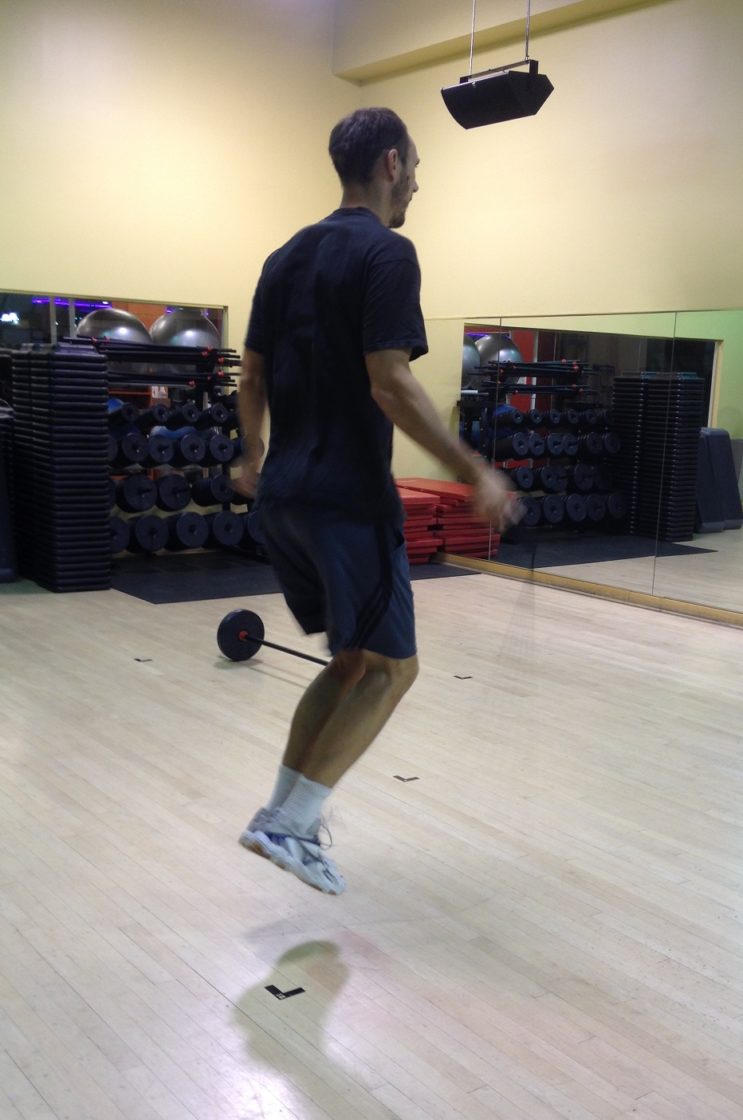There are extra long skipping ropes for tall people out there. But before we get to that, how long should a skipping rope be in relation to the body? It depends. The most common recommendation is that, when standing with one foot on the middle of the skipping rope, both handles should come up to the arm pit. But for beginners, a couple extra inches will make it easier to clear the head and toes, while for those more skilled, a shorter skipping rope lends itself to greater speed and tricks such as double-unders. Skipping style also plays a role; hands far away from the body adds extra horizontal component and thus require a longer skipping rope and vice versa. The universal object size calculator may also prove helpful in selecting the size of an extra long jump rope for tall person.
I’m 6’7 and the arm pit rule dictates almost exactly an 11′ extra long skipping rope for me. I find that to be too long, but perhaps that is due to holding the handles close to my sides, a habit formed from using too short of skipping ropes. The most common length is 8′, however, 11′ and even 12′ adjustable extra long skipping ropes can be found. If Robert Wadlow were to have skipped, he would have been best served by what is known as a Double Dutch skipping rope (lengths typically range from 12′ to 18′). When selecting your rope length, it’s best to choose a bit longer, as you can usually shorten, but not lengthen a jump rope for tall people.
For those who prefer to make a DIY extra long skipping rope for people, there are a great deal of options. One simple approach is to use some nylon rope and PVC pipe for the handles, both of which can be picked up at most hardware stores. Some hockey tape can make the handles nicer to hold. For a faster rope, you might try a leather cord.
Tall people are at greater risk of fractures such as those to the hip [1]. Increasing bone density can help prevent fractures. This can be done with weight bearing activities including walking and jogging. Jumping in particular is helpful in generating the kind of stresses that build bone density and strength [2]. Jumping is a lot more fun and interesting when you have a rope, as in skipping. Plus, skipping is a great way to improve balance and coordination and both cardiovascular and musculoskeletal health. So tall people should start skipping. Remember to ramp up gradually into a skipping routine. Being tall means you will have an inherently slower cadence with exponentially greater forces and stresses, so don’t try to keep up with any shorties just yet. Moderation in all things.
[1] Male risk factors for hip fracture—a 30-year follow-up study in 7,495 men








